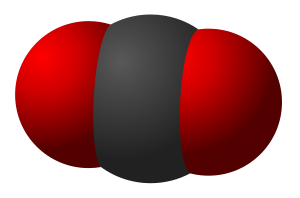Carbon dioxide retention
| Hypercapnia | |
|---|---|
 |
|
| Carbon dioxide | |
| Classification and external resources | |
| Specialty | Pulmonology |
| ICD-10 | R06.8 |
| ICD-9-CM | 786.09 |
| DiseasesDB | 95 |
| MeSH | D006935 |
Hypercapnia, also known as hypercarbia and CO2 retention, is a condition of abnormally elevated carbon dioxide (CO2) levels in the blood. Carbon dioxide is a gaseous product of the body's metabolism and is normally expelled through the lungs.
Hypercapnia normally triggers a reflex which increases breathing and access to oxygen (O2), such as arousal and turning the head during sleep. A failure of this reflex can be fatal, for example as a contributory factor in sudden infant death syndrome.
Hypercapnia is the opposite of hypocapnia, the state of having abnormally reduced levels of carbon dioxide in the blood. The word is from the Greek hyper = "above" or "too much" and kapnos = "smoke".
Symptoms and signs of early hypercapnia include flushed skin, full pulse, tachypnea, dyspnea, extrasystoles, muscle twitches, hand flaps, reduced neural activity, and possibly a raised blood pressure. According to other sources, symptoms of mild hypercapnia might include headache, confusion and lethargy. Hypercapnia can induce increased cardiac output, an elevation in arterial blood pressure, and a propensity toward arrhythmias. In severe hypercapnia (generally PaCO2 greater than 10 kPa or 75 mmHg), symptomatology progresses to disorientation, panic, hyperventilation, convulsions, unconsciousness, and eventually death.
...
Wikipedia
